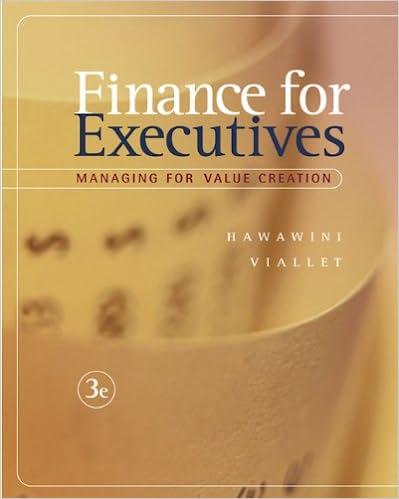Answered step by step
Verified Expert Solution
Question
1 Approved Answer
In this exercise we consider a life insurance company Bronze with the following initial balance sheet: The value of the liabilities is 8 5 NOK.
In this exercise we consider a life insurance company Bronze with the following initial balance sheet:
The value of the liabilities is NOK. The liabilities consist of one certain cash flow after years. The
value of NOK has been determined by discounting this single cash flow with the years interest rate
according to EIOPA ie the organization that is responsible for Solvency II See the table in the
appendix. This is the curve that was published by EIOPA for December The curve converges to
the Ultimate Forward Rate of
The value of the bonds is NOK. In fact Bronze only invests in one government bond. The bond is a so
called zerobond ie there is only one payment at maturity date and no coupon payments in between
The maturity of the zerobond is years. The value of NOK has been determined by discounting the
single cash flow with the years interest rate according to EIOPA. There is no default risk.
We assume the EIOPA curve is applicable both to liabilities as to government bonds.
Questions:
What would the balance sheet look like if the EIOPA interest rate curve would drop with the
coming split second and the equity investments will stay at the current level
a Approximate the new balance sheet using the duration approximation
b Approximate the new balance sheet using the duration convexity approximation
c Calculate the exact balance sheet without using approximations
Suppose that Bronze is holding the same assets and liabilities for the coming years and suppose that
the equity investments stay at the current levels and interest rates do not change during the entire
years. Ignore the interest rate change in
What does the balance sheet look like at T one split second before the zerobond matures? What
is the value of the Net Assets?
At T the zero bond expires and is reinvested in a new zerocoupon bond with again a maturity of
years.
What is the size of the new zerobond cash flow at T
What does the balance sheet look like at T one split second before the new zerobond expires?
What is the value of the Net Assets?
At T the expiring zerobond expires and is reinvested again in a new zerocoupon bond with again a
maturity of years.
What does the balance sheet look like at T one split second before the new zerobond expires?
What is the value of the Net Assets?
At T the expiring zerobond expires and is reinvested again in a new zerocoupon bond with a maturity
of years.
What does the balance sheet look like at T one split second before the new zerobond expires?
What is the value of the Net Assets?
Describe the change in the value of the Net Assets between t and T Explain what causes the
changes you see.
Do you think the balance sheet as shown above gives a fair picture of the Net Assets the buffer the
company has at T Please comment.
Step by Step Solution
There are 3 Steps involved in it
Step: 1

Get Instant Access to Expert-Tailored Solutions
See step-by-step solutions with expert insights and AI powered tools for academic success
Step: 2

Step: 3

Ace Your Homework with AI
Get the answers you need in no time with our AI-driven, step-by-step assistance
Get Started


